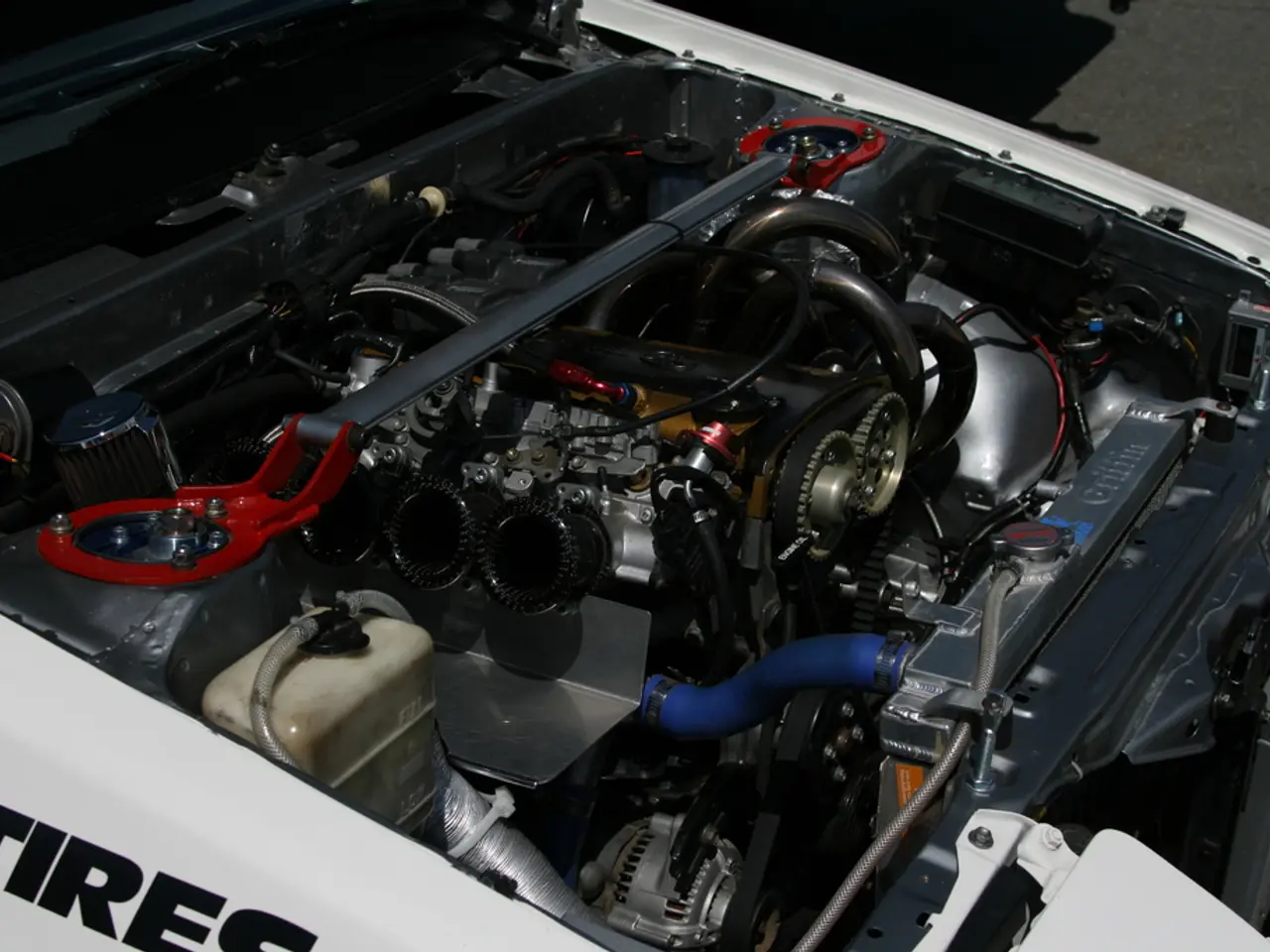Electric car charging dynamics have yet to incorporateAI, though a potential shift is on the horizon.
In the rapidly evolving world of electric vehicles (EVs), the integration of artificial intelligence (AI) into battery estimation systems is gaining traction. This innovative approach combines advanced data-driven AI models with traditional physics-based methods to improve real-time battery state estimation, management, and safety.
Researchers, such as Martin Skoglund from the Research Institutes of Sweden (RISE), are spearheading this development. Skoglund and his colleagues have been conducting "fault injection experiments" on AI models, simulating errors from electrical interference or radiation, to ensure robustness in the face of potential faults.
The state of charge (SOC) in an electric car is critical for safety functions like preventing overcharging and running out of battery. AI models, by analysing complex and rapidly changing battery parameters—like voltage, current, temperature, and aging patterns—provide more accurate and dynamic predictions than conventional methods, leading to increased efficiency and extended battery life.
However, this integration faces substantial challenges. One key issue is the sensitivity of AI models to faulty or corrupted sensor data, which can cause inaccurate battery state estimations and potentially dangerous outcomes such as overcharging, overheating, or even fire. To address this, Skoglund proposes a "safety cage," a monitor that is rigorously tested and performs easy calculations or checks thresholds on inputs like voltage, current, and temperature while the AI takes in sensor readings.
Another challenge is the computational complexity of combining high-fidelity physics-based simulations with real-time AI models. Hybrid digital twins that blend AI surrogates with physical simulations help address this by enabling fast yet accurate system-level battery predictions that can be embedded into EV control systems.
Moreover, managing multi-battery configurations with varying aging profiles and ensuring thermal management to prevent degradation are also addressed progressively by AI-driven battery management systems that balance loads and regulate temperature automatically, thereby boosting safety and efficiency.
Large-scale deployment and continuous learning from real-world battery data, exemplified by companies like CATL leveraging AI-powered battery management at grid scale, become crucial for refinement and trustworthiness.
In summary, the approach to integrating AI in EV battery estimation focuses on hybrid modeling for accurate, real-time state estimation and control, supported by fault-tolerant designs and large-scale data aggregation. The electric vehicle (EV) industry has not yet adopted AI for battery charging, but this could change in the future as the benefits of increased efficiency and safety become more apparent. The safety cage approach is one way to integrate AI into electric vehicle technology safely, and it highlights a promising path forward in the rapidly evolving field of AI integration in electric vehicles.
Artificial intelligence (AI) in the field of electric vehicles (EVs) could potentially extend battery life and increase efficiency, but it faces challenges such as sensitivity to faulty sensor data, computational complexity, and managing multi-battery configurations. To counteract inaccurate battery state estimations, Martin Skoglund proposes a safety cage, a monitor that performs easy calculations or checks thresholds on inputs like voltage, current, and temperature while the AI takes in sensor readings. This approach follows the integration of AI into battery estimation systems, which combines advanced data-driven AI models with traditional physics-based methods for real-time state estimation and control.




